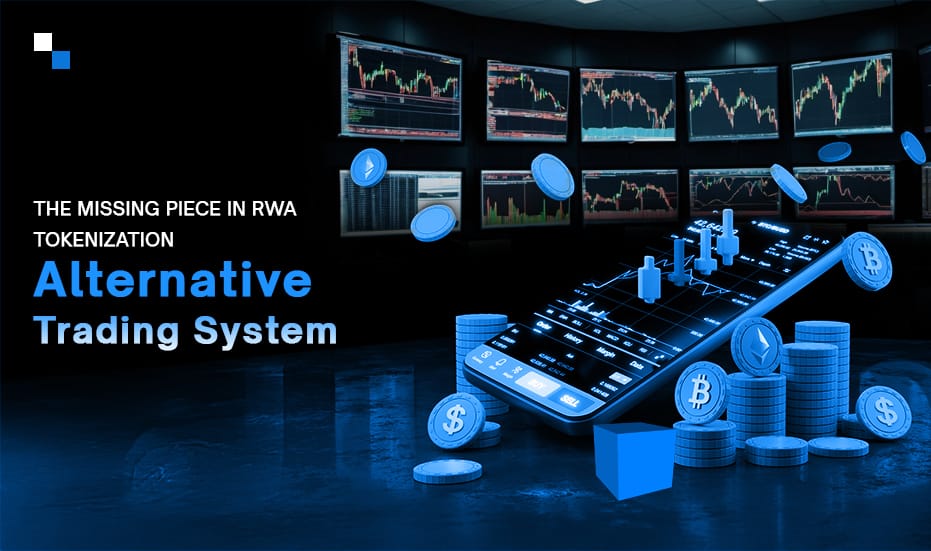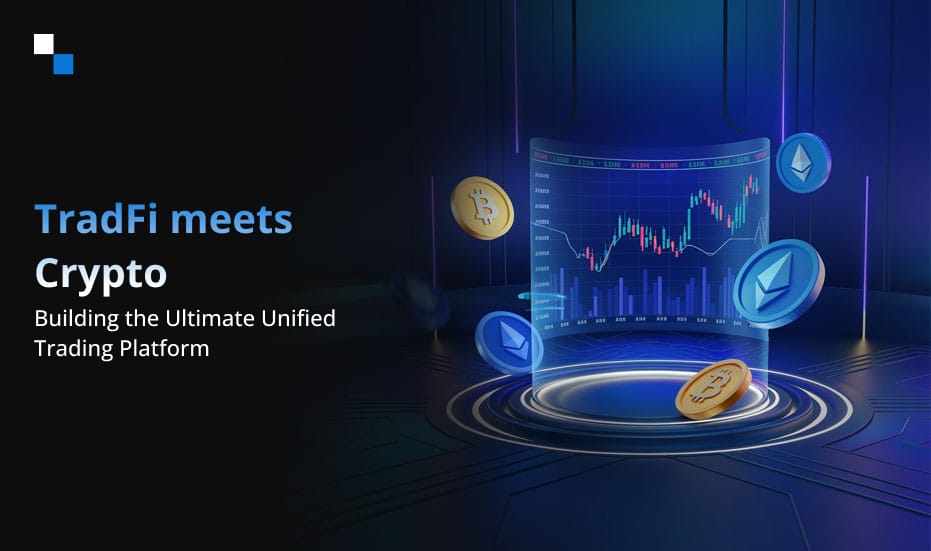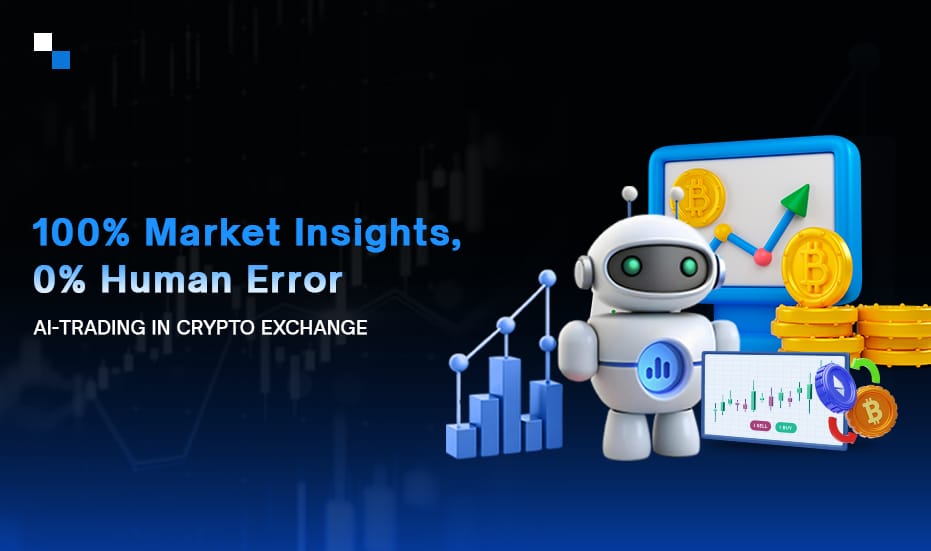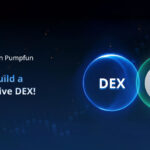Introduction
Imagine building a bridge to connect two worlds: the trillion-dollar realm of RWAs and the borderless innovation of blockchain. You’ve digitized real estate, tokenized fine art and properties, and fractionalized private equity. But when investors arrive at the edge of this bridge, they pause. How do they trade these tokens? The answer lies in a missing piece: a compliant Alternative Trading System (ATS). Without it, tokenized RWAs risk becoming illiquid digital certificates—a revolution stuck in limbo.
Let’s proceed to fix the puzzle.
The RWA Hype Is Real — But So Are the Gaps
Nearing $185 billion at the beginning of 2024, the RWA market is expected to surge by 54x, reaching $10 trillion by 2030. Major financial institutions like BlackRock and JPMorgan have dipped their toes while DTCC, Clearstream, and Euroclear are rolling out tokenization pilot projects, signaling serious institutional interest. The RWA market is red-hot, a live strategic priority for the world’s most influential financial institutions.
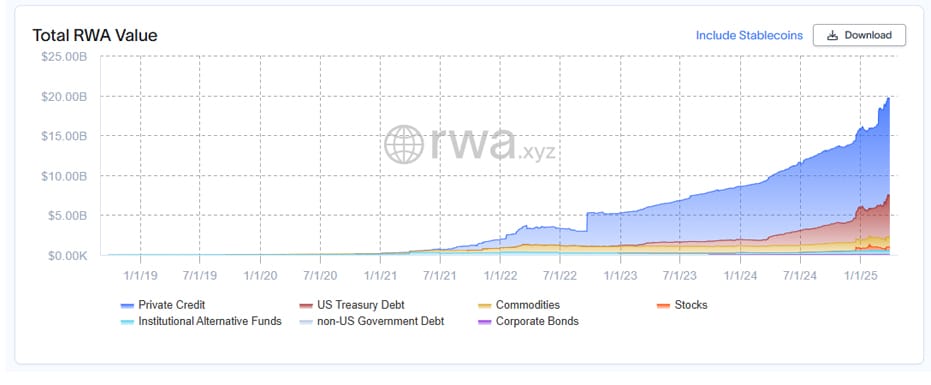
Source: RWA.xyz
However, beneath the surface of this burgeoning hype lies a glaring gap that threatens to impede RWA tokenization’s widespread adoption and long-term sustainability: the absence of robust, liquid, and regulated marketplaces. This isn’t just a gap but a fundamental failure. Without compliant infrastructure, tokenized RWAs lack utility. Enter ATS Trading Platforms, the compliance-first market layer designed to unlock real value.
What Is an Alternative Trading System Platform — and Why Should Web3 Care?
An alternative trading system is a regulatory-grade digital marketplace that facilitates the trading of securities outside traditional exchanges. In the U.S., ATS platforms operate under the oversight of the SEC and FINRA, enforcing rules that cover disclosure, investor protection, and cross-border compliance. ATS employs computerized systems to match buy and sell orders for securities. Unlike national securities exchanges, an alternative trading system platform does not have the same listing requirements or regulatory responsibilities, although it retains the option to apply for exchange status.
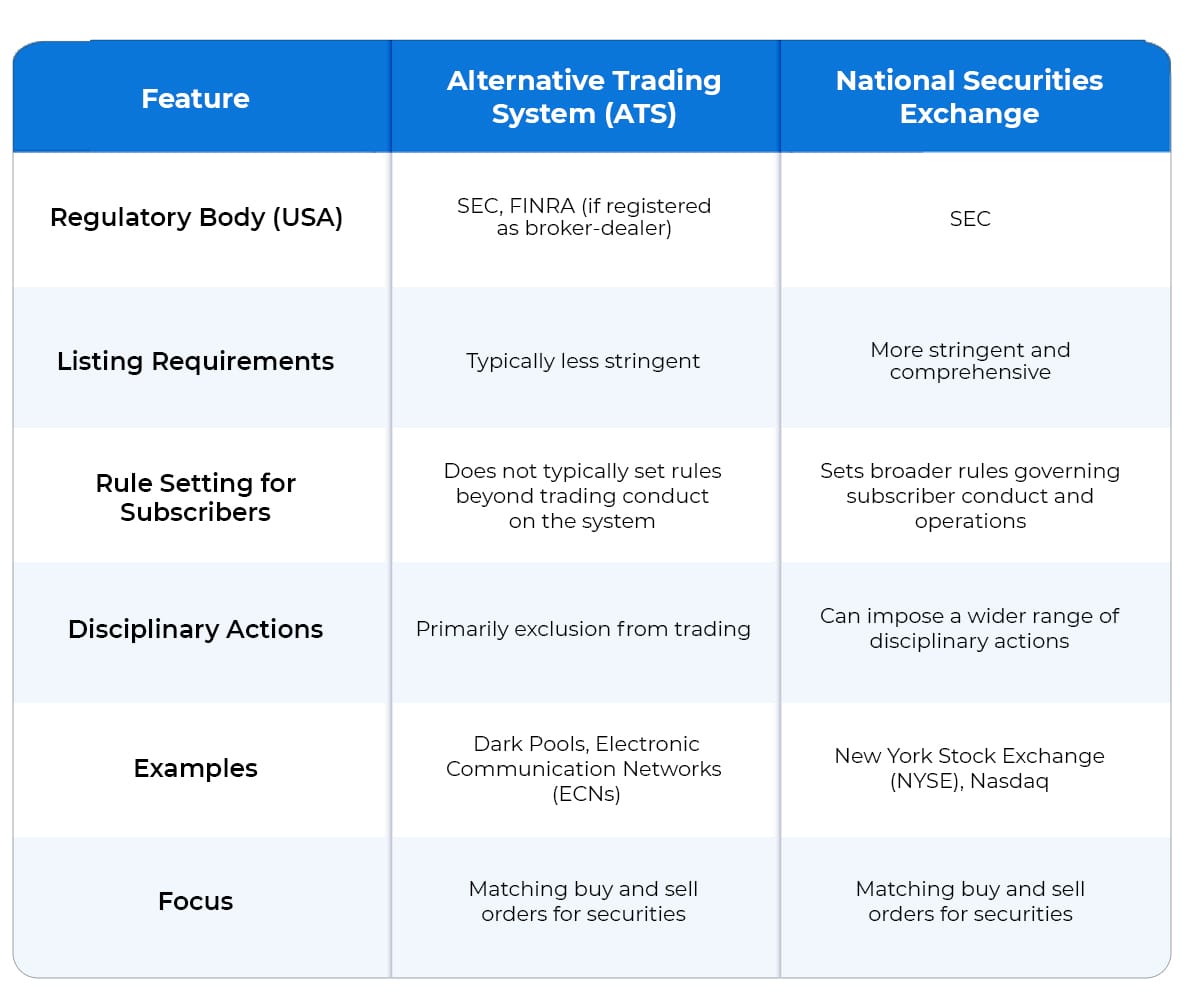
For forward-looking RWA tokenization projects, ignoring ATS trading platform infrastructure is an existential risk. Unlike DEXs, which operate on pseudonymity and code-as-law, ATSs bring real-world enforceability to asset trading. They are the crucial missing layer that allows institutional-grade assets, tokenized or not, to be traded with confidence, legal clarity, and institutional safeguards.
The Current Reality and How ATS Trading Addresses Challenges
Reality 1: Tokenized Assets Without a Regulated Market
While the tokenization tech for RWAs continues to mature rapidly, the infrastructural innovations for safe, seamless, and compliant exchange still lag. A token without a market is a liability, not a revolution. Even assets with real-world yield struggle without regulated rails. This disconnect within the ecosystem resembles a scenario where numerous companies have issued stocks, yet no regulated trading venue exists to facilitate trading. This missing piece of the puzzle questions the very liquidity that tokenization promises. The idea that liquidity will simply emerge post-tokenization is wishful thinking.
Solution: Alternative trading systems play a significant role in facilitating large-volume trades, often catering to institutional investors seeking efficient execution of orders. Common examples of ATSs include dark pools, which offer anonymity for large trades, and Electronic Communication Networks (ECNs), which directly connect buyers and sellers.
Reality 2: Liquidity Challenges
Simply tokenizing an asset does not automatically guarantee liquidity. It is largely influenced by factors such as investor interest, the perceived security of the token, and the presence of efficient trading mechanisms, which further regulate price discoveries. Market makers, ensuring buyers and sellers can readily find counterparties by continuously providing bid and ask prices, are conspicuously absent in the RWA token space. Their absence in the RWA token space contributes to wider price spreads, increased volatility, and difficulties in executing trades promptly, making the market less attractive to a broad range of investors.
Solution: ATS trading platforms offer regulated venues where buyers and sellers of tokenized RWAs can connect and execute trades. Blockchain-based alternative trading system platforms can also facilitate the trading of fractionalized RWAs, opening up investment opportunities to a broader range of participants and increasing overall trading volume and liquidity. As trading on ATS platforms grows, it becomes more appealing for market makers to participate.
Interoperability Woes
The RWA tokenization landscape is further complicated by its fragmentation across a multitude of disparate blockchain networks. This lack of interoperability presents a significant hurdle, as assets tokenized on one blockchain are often inaccessible or difficult to trade with assets residing on another, further diluting overall market liquidity.
Solution: Blockchain-based alternative trading system platforms can leverage atomic transfers, cross-chain protocols such as bridges, wrapped tokens, layer-0 integrations, or unified order books, which aggregate orders for a token on multiple chains.
Regulatory Incomprehension
Since trading venues for tokenized RWA platforms are a novel concept, businesses willing to bridge the blockchain and RWAs face challenges due to regulatory oversight.
Solution: The regulatory framework already in place for trading securities on ATS trading platforms in traditional finance offers a well-established compliance blueprint that can be strategically adapted for the burgeoning market of tokenized RWAs. Leveraging this existing regulatory structure can provide the Web3 space with a familiar and trusted framework. This approach could accelerate the adoption of RWA tokens by institutional investors who prioritize regulatory certainty and the security of their investments.
While companies are actively looking to realize the often-touted benefits of tokenization accessibility and liquidity, it is crucial to note that tokenization alone is not sufficient. The creation of functional and compliant marketplaces like alternative trading systems is a prerequisite for translating the inherent advantages of tokenization into tangible realities for both investors and asset holders.
The Huge Gap Cemented With Alternative Trading Systems
The significant projected growth of the RWA tokenization market, reaching trillions of dollars in the coming years, stands in stark contrast to the current market size, which remains in the billions. While the potential is undoubtedly immense, the substantial difference reveals the infrastructural deficit that needs to be addressed for the market to support such expansion. If issuers and platforms fail to build a robust secondary marketplace infrastructure aligned with securities (like an ATS trading platform), they’re not building financial innovation—they’re building digital dead ends.
Anatomy of a Compliant ATS Trading Platform for RWA
A compliant ATS trading platform is a deeply integrated stack that extends well beyond matching engines. It starts with identity—full-spectrum KYC/AML, jurisdictional filtering, and investor accreditation.
Smart contracts enforce rule-based transfers aligned with token standards like ERC-1400 and ERC-3643.
Regulated custody ensures asset backing and institutional-grade control.
Matching logic must support price discovery while complying with restrictions on who can trade, when, and under what terms.
Disclosure pipelines, audit trails, and investor communication protocols are non-negotiable.
In short, an ATS trading platform transforms tokenized assets from passive representations into programmable financial instruments governed by enforceable logic and legal finality.
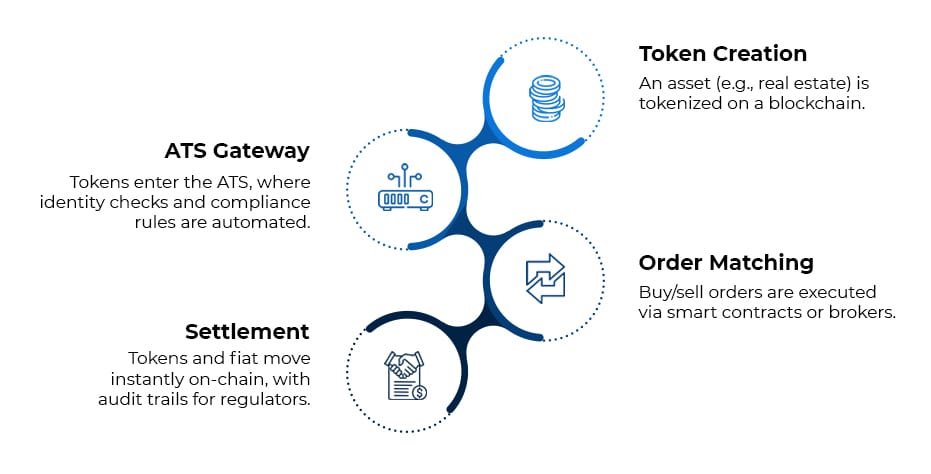
Regulatory Frontlines: How Jurisdictions Are Treating ATS Trading & RWA
Global regulatory momentum is coalescing around alternative trading systems infrastructure as the foundation for legal RWA markets. In the United States, the foundational step involves registering the ATS as a broker-dealer with the Securities and Exchange Commission (SEC) and becoming a member of the Financial Industry Regulatory Authority (FINRA). The operation of these trading venues is governed by Regulation ATS, which establishes a comprehensive regulatory framework requiring SEC approval and broker-dealer registration. Prospective ATS trading platform operators must file Form ATS with the SEC, providing detailed information about their operational framework, the types of securities traded, and their order-handling procedures. Furthermore, ATSs are subject to ongoing reporting obligations, must ensure fair access to their platforms, and are mandated to maintain stringent data confidentiality and security protocols. They must also keep accurate and comprehensive books and records of all trading activities, subscriber communications, and financial transactions, adhering to regulatory standards for recordkeeping. In the European Union, the equivalent of an alternative trading system is known as a Multilateral Trading Facility (MTF), which operates under the regulatory umbrella of MiFID II.
The following table offers an overview of regulations for digital assets termed as securities and ATS around major jurisdictions embracing tokenization technology:
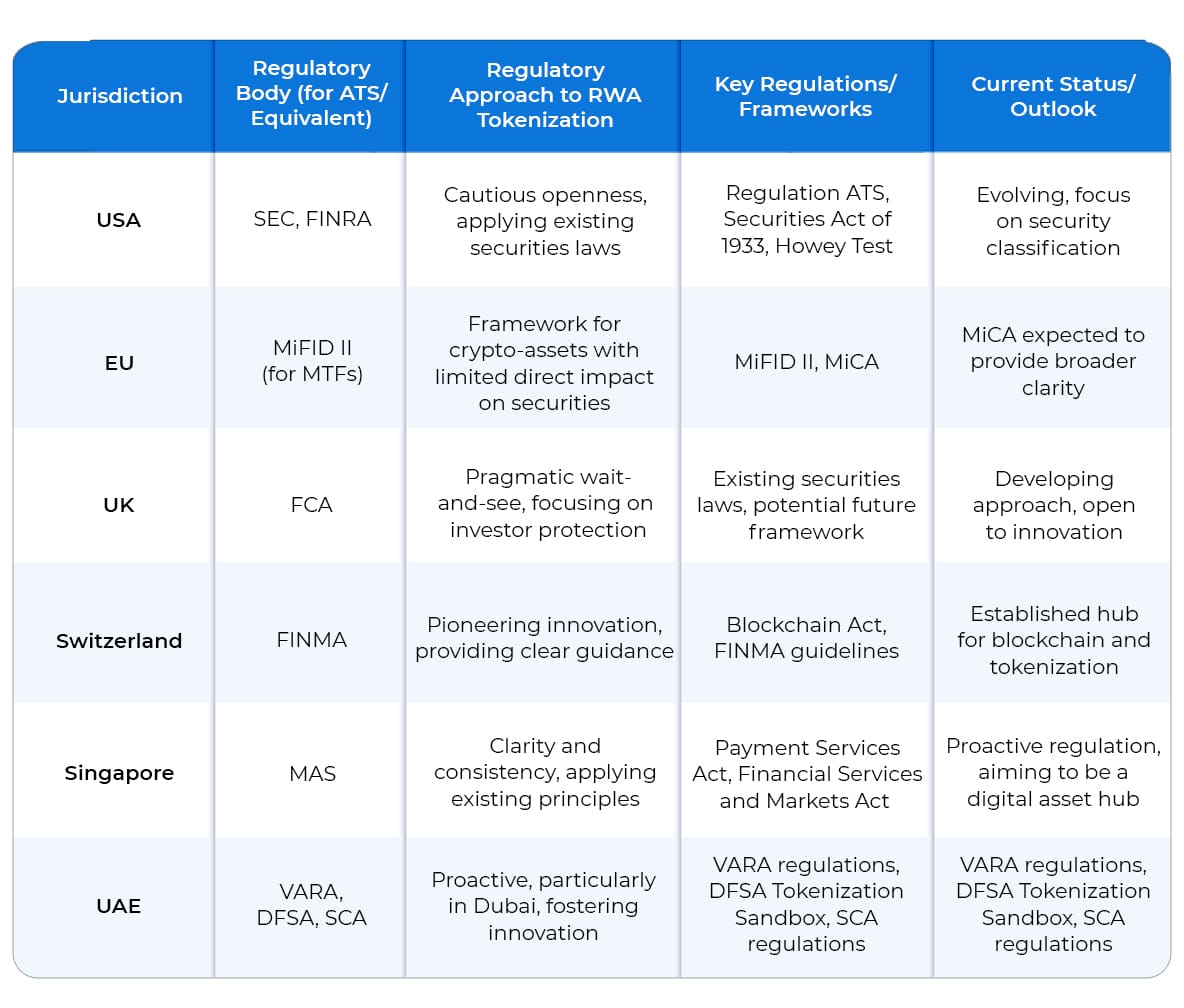
The diverse levels of regulatory clarity and maturity observed across these key jurisdictions highlight the inherent complexity in establishing a truly global RWA token trading platform like alternative trading systems. Projects venturing into this space must meticulously assess their intended target markets and navigate the specific and often varying regulatory requirements of each.
Integration Blueprint: Embedding ATS Logic in Your RWA Platform
Senior decision-makers must approach ATS integration as core infrastructure, not a compliance patch. Beginning with leveraging token standards like ERC-1400 or ERC-3643 for tokenization that enable identity-bound transfer logic. The ATS trading platforms must also incorporate third-party KYC/AML providers, DIDs at the wallet or investor portal level, and embed compliance APIs that gate trading based on jurisdiction, investor class, or licensing status. The next steps are as follows:
1. Regulatory and Legal Alignment:
- Engage legal experts to map jurisdictional requirements (e.g., SEC Reg ATS, MiFID II, or local securities laws).
- Define licensing needs for ATS trading (e.g., broker-dealer licenses, ATS registrations) and ensure compliance with investor accreditation rules (e.g., Rule 506(c) for accredited investors).
2. Tokenization Framework
- Adopt compliant token standards like ERC-1400 (for securities with embedded transfer restrictions) or ERC-3643 (for identity-bound tokens).
- Embed compliance logic into smart contracts of your alternative trading system (e.g., blocking transfers to unverified wallets, enforcing holding periods).
3. Institutional-Grade Custody
- Partner with institutionally backed qualified custodians (e.g., Anchorage, Fireblocks) for audit-ready asset storage.
- Use multi-sig wallets or MPC technology for secure transaction signing.
4. Trading Engine Design
- Build a matching engine supporting:
- Order-book dynamics (limit/market orders).
- OTC workflows (bespoke negotiations with pre-trade compliance checks).
- Ensure real-time compliance validation for your ATS trading platform (e.g., blocking orders from non-accredited wallets).
5. Settlement & Legal Finality
- Align settlement with jurisdictional rules:
- Use on-chain settlement for instant finality where legally recognized.
- Integrate smart escrow for assets requiring off-chain legal approvals (e.g., property titles).
6. Automate corporate actions (e.g., dividends, buybacks) via smart contracts.
- Audit Trails & Transparency
-
- Log all transactions, KYC data, and compliance decisions on immutable ledgers.
- Generate regulatory reports (e.g., SEC Form ATS-R, MiFID II transaction reporting).
7. Liquidity Strategy
- Partner with market makers and institutional investors to bootstrap liquidity for your alternative trading system platform.
- Enable interoperability with legacy systems (e.g., SWIFT, CSDs) for fiat/asset transfers.
8. Regulatory Sandbox Testing
- Pilot the ATS trading platform in regulatory sandboxes (e.g., FCA Sandbox, MAS Sandbox) to refine compliance.
- Conduct smart contract audits (e.g., OpenZeppelin) and penetration testing.
9. Governance & Risk Management
- Establish a governance framework for protocol upgrades and dispute resolution.
- Implement circuit breakers to halt trading during volatility or compliance breaches.
10. Continuous Monitoring & Iteration
- Deploy real-time surveillance tools (e.g., Solidus Labs) to your alternative trading systems for market abuse detection.
- Update compliance logic dynamically as regulations evolve (e.g., travel rule adherence).
Alternative Trading Systems: A Pre-Requisite For RWA Tokenization Projects
RWA Tokenization isn’t just about digitizing ownership but also enabling regulated trade in a digital-first world. Without ATS trading infrastructure, tokenized assets remain trapped in technical potential but legal limbo. The real unlock lies in compliance-driven design: programmable identity, licensed custody, and rule-bound transfers. This is where regulation meets innovation and where transformation becomes transaction.
The Role of a Blockchain Consulting Partner
For enterprise platforms entering the RWA and ATS trading space, a strategic blockchain consulting partner plays a critical role in de-risking execution. The complexity of building a compliant, modular, and scalable ATS infrastructure requires specialized expertise. A seasoned consulting partner like Antier brings deep knowledge of tokenization frameworks, regulatory alignment, and enterprise-grade marketplace architecture. Antier bridges the gap between vision and real-world deployment by handling everything from navigating jurisdictional constraints to deploying multi-chain infrastructure.
Share your outstanding ideas for alternative trading systems development today!
